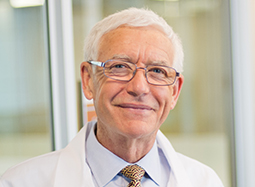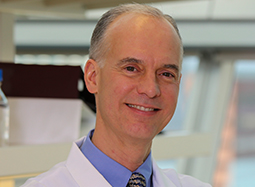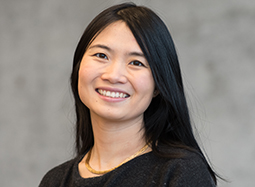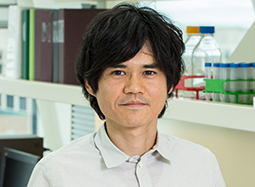Mahershala Ali, Kathy Bates, Katie Couric, Jennifer Garner, Tony Hale, Marg Helgenberger, Ed Helms, Ken Jeong, Marlee Matlin, Matthew McConaughey, Maria Menounos, Jillian Michaels, Trevor Noah, Dak Prescott, Italia Ricci, Rob Riggle, Karla Souza, David Spade, Keith Urban, and Reese Witherspoon to appear in live one-hour event co-executive produced by Bradley Cooper
2018 telecast marks ten years of making an impact with groundbreaking cancer research for Stand Up To Cancer
NOTE: Release from Stand Up To Cancer. Learn about the Van Andel Research Institute–Stand Up To Cancer Epigenetics Dream Team here.
LOS ANGELES, August 16, 2018 – Stand Up To Cancer (SU2C), a division of the Entertainment Industry Foundation (EIF), is proud to announce that the Hollywood community is rallying together yet again to support the sixth biennial televised fundraising special on Friday, Sept. 7 (8:00 – 9:00 PM ET/PT / 7:00 – 8:00 PM CT). Mahershala Ali, Kathy Bates, Katie Couric, Jennifer Garner, Tony Hale, Marg Helgenberger, Ed Helms, Ken Jeong, Marlee Matlin, Matthew McConaughey, Maria Menounos, Jillian Michaels, Trevor Noah, Dak Prescott, Italia Ricci, Rob Riggle, Karla Souza, David Spade, Keith Urban, and Reese Witherspoon will participate in this memorable event — marking 10 years since the first telecast and 10 years of SU2C’s lifesaving research achievements. Additional stars and performers will be announced in the coming weeks.
Bradley Cooper, Academy Award®-nominated actor, will return as co-executive producer along with the renowned live-event producing team Done + Dusted, working again with the Stand Up To Cancer production team, after a successful partnership for the 2016 telecast.
“As someone whose family has been significantly touched by cancer, I am proud to again have the privilege of co-executive producing this year’s Stand Up To Cancer telecast,” said SU2C Co-Executive Producer Bradley Cooper. “This show reminds everyone that you are never alone… that there is a community of support out there when you need it most. That’s the power of SU2C. Most importantly, the telecast showcases the significant progress being made in the fight against cancer, instilling hope in those facing the disease. This one-hour broadcast unites us all to raise funds for more effective treatments to save lives now.”
The telecast will broadcast live from The Barker Hangar in Santa Monica, CA. As in years past, ABC, CBS, FOX, and NBC, along with AT&T AUDIENCE Network, Bloomberg TV, Bravo, Discovery Life, E!, EPIX, Escape, ESPNEWS, FM, Freeform, FS2, FXM, FYI, Galavision, HBO, HBO Latino, ION Television, Jewish Life TV, Laff, Logo, MTV2, Nat Geo WILD, PeopleTV, REELZ, SHOWTIME, Smithsonian Channel, STARZ, STARZ ENCORE, STARZ ENCORE ESPAÑOL, TNT, Univision Puerto Rico, and WGN America are donating one hour of simultaneous commercial-free primetime for the telecast, with additional networks to be announced. Following the live broadcast, the telecast will be available to stream via ComedyCentral.com and the Comedy Central app, as well as its VOD partners. Aspire TV will air the Stand Up To Cancer telecast on Saturday, Sept. 8 at 8:00 AM- 9:00 AM ET/PT / 10:00 AM CT. The entire telecast will also be available to stream live and on-demand on Hulu.
For the third time, Stand Up To Cancer Canada will simultaneously broadcast a Canada-inclusive telecast across four major English-language Canadian broadcasters: CBC, Citytv, CTV, and Global, as well as Canadian services AMI, A.Side, BBC Earth, CHCH, CHEK, Cottage Life, Fight Network, Game TV, HIFI, Hollywood Suite, Love Nature, Makeful, NTV, OUTtv, Smithsonian Channel Canada, T+E, and YES TV. In addition, the show will stream live on the CBC TV App, cbc.ca/watch, CBS All Access, CTV GO and CTV.ca, Global GO and GlobalTV.com, and will be available on-demand on TELUS Optik TV in Canada.
“This year’s Stand Up To Cancer telecast will be full of inspiring stories and hope, uniting us all in a common cause,” said Katy Mullan, executive producer at Done + Dusted. “We will feature the patients, survivors, doctors, nurses and researchers on the front line fighting cancer every single day, as well as highlighting the groundbreaking science that SU2C funds, changing the landscape of cancer research and saving lives. It will be a celebration of the progress that is being made and affirm that when we all come together, we can achieve great things,” Mullan said.
The first five SU2C telecasts took place on September 5, 2008, September 10, 2010, September 7, 2012, September 5, 2014, and September 9, 2016 and were made available to more than 190 countries. The Canada-inclusive SU2C telecasts aired in 2014 and 2016.
The 2018 telecast is especially significant for SU2C, as it commemorates ten years of raising awareness and funds for innovative cancer research that is helping save lives now. Stars who have taken part in the previous five telecasts include Jessica Alba, Halle Berry, Matt Bomer, Jordana Brewster, Marcia Cross, Sheryl Crow, Matt Damon, Viola Davis, Michael Douglas, Robert Downey Jr., Jesse Tyler Ferguson, America Ferrara, Dave Franco, Tony Goldwyn, Tony Hale, Jon Hamm, Tom Hanks, Marg Helgenberger, Ed Helms, Felicity Huffman, Samuel L. Jackson, Ken Jeong, Scarlett Johansson, Anna Kendrick, Jaime King, Eva Longoria, Lori Loughlin, Rob Lowe, Kyle MacLachlan, Sonequa Martin-Green, Jillian Michaels, Gwyneth Paltrow, Italia Ricci, Rob Riggle, Seth Rogen, Julia Roberts, Jimmy Smits, Brenda Song, Ben Stiller, Emma Stone, Eric Stonestreet, Alison Sweeney, Taylor Swift, Maura Tierney, Justin Timberlake, Bree Turner, Sofia Vergara, Denzel Washington, Kerry Washington, Kristen Wiig, Charlie Wilson, Rita Wilson, and Reese Witherspoon. The 2016 telecast featured musical performances from Celine Dion, Charlie Puth, Alessia Cara and Gallant, as well as Dierks Bentley, who was joined by Keith Urban and Little Big Town.
To date, more than $480 million has been pledged in support of SU2C’s innovative cancer research. The organization has brought together more than 1,500 of the best scientists from over 180 leading institutions with an emphasis on collaborative, multidisciplinary teams that deliver new therapies and treatments to cancer patients. Scientists work together on Stand Up To Cancer’s 24 signature “Dream Teams,” among a total of 79 team science grants and awards, whose research is aimed at ending cancer’s reign as a leading cause of death worldwide. SU2C-funded researchers have planned, launched or completed more than 180 clinical trials involving over 12,000 patients.
The results have been exceptional. In just under 10 years, SU2C research has contributed to FDA approval of five new cancer therapies, including treatments for breast, ovarian, and pancreatic cancers and difficult-to-treat leukemias. Additional trial results have been submitted or are nearing completion for breast, colon, ovarian, and prostate cancers and for metastatic melanoma. Stand Up To Cancer has provided substantial funding for the study of immunotherapy in the fight against cancer, and has advanced development of technologies using blood tests to identify cancers early, imaging to understand tumor progression, and precision medicine via new laboratory tools.
SU2C’s wide-ranging scientific portfolio is overseen by a blue-ribbon scientific advisory committee chaired by Nobel Prize winner Phillip A. Sharp, Ph.D., Institute Professor at the Massachusetts Institute of Technology. Most grants are administered by SU2C’s Scientific Partner, the American Association for Cancer Research (AACR), the world’s first and largest professional organization dedicated to advancing cancer research.
Other members of the SU2C Scientific Advisory Committee (SAC) include Vice Chairs Raymond N. DuBois, M.D., Ph.D., dean, College of Medicine, and professor, Departments of Biochemistry and Medicine, Medical University of South Carolina in Charleston; Lee J. Helman, M.D., professor, Keck School of Medicine, University of Southern California, and director, Cancer Research Program, Children’s Hospital of Los Angeles; Arnold J. Levine, Ph.D., professor emeritus of systems biology at the Institute for Advanced Study in Princeton, New Jersey; and William G. Nelson, M.D., Ph.D., director of the Johns Hopkins Sidney Kimmel Comprehensive Cancer Center in Baltimore. The SU2C Canada Scientific Advisory Committee is co-chaired by Alan Bernstein O.C., O.Ont., Ph.D., FRSC president and chief executive officer of the Canadian Institute for Advanced Research (CIFAR) and Dr. Sharp. Projects are administered by AACR International-Canada and Stand Up To Cancer Canada.
As SU2C’s founding donor, Major League Baseball has continued to annually provide both financial support and countless opportunities to build the Stand Up To Cancer movement by encouraging fans worldwide to get involved, most notably through its two largest global events – the MLB All-Star Game and the World Series. In addition to MLB, SU2C’s “Luminary” donors include Bristol-Myers Squibb Company, Lustgarten Foundation for Pancreatic Cancer Research, and Mastercard. “Visionary” donors include CVS Health, Genentech, a member of the Roche Group, and the Sidney Kimmel Foundation.
Additional major donors and collaborators include American Airlines, American Cancer Society, Merck, Rally Health, Inc., St. Baldrick’s Foundation, and Van Andel Research Institute. Other key supporters and collaborators include American Lung Association’s LUNG FORCE, Breast Cancer Research Foundation, Farrah Fawcett Foundation, Laura Ziskin Family Trust, LUNGevity Foundation, National Ovarian Cancer Coalition, Ovarian Cancer Research Fund Alliance, Society for Immunotherapy of Cancer, and international collaborator Cancer Research UK.
The Canadian Cancer Society (CCS) and the Canadian Institutes of Health Research (CIHR) are actively collaborating with SU2C Canada. CCS is also a collaborator in the inaugural Stand Up To Cancer Canada – Canadian Cancer Society Breast Cancer Dream Team, along with the Ontario Institute for Cancer Research (OICR). Collaborators in the inaugural Stand Up To Cancer Canada Cancer Stem Cell Dream Team include CIHR, Cancer Stem Cell Consortium, Genome Canada and OICR. AstraZeneca Canada and Mastercard are the first corporate supporters of SU2C Canada.
###
ABOUT STAND UP TO CANCER
STAND UP TO CANCER (SU2C) raises funds to accelerate the pace of research to get new therapies to patients quickly and save lives now. A division of the Entertainment Industry Foundation (EIF), SU2C was established in 2008 by media and entertainment leaders who utilize these communities’ resources to engage the public in supporting a new, collaborative model of cancer research, to increase awareness about cancer prevention, and to highlight progress being made in the fight against the disease. As of April 2018, more than 1,500 scientists representing more than 180 institutions are involved in SU2C-funded research projects.
Under the direction of our Scientific Advisory Committee, led by Nobel laureate Phillip A. Sharp, Ph.D., staff at SU2C and the American Association for Cancer Research, our Scientific Partner, implement rigorous competitive review processes to identify the best research proposals to recommend for funding, oversee grants administration, and ensure collaboration across research programs.
Current members of the SU2C Council of Founders and Advisors (CFA) include Katie Couric, Sherry Lansing, Kathleen Lobb, Lisa Paulsen, Rusty Robertson, Sue Schwartz, Pamela Oas Williams, and Ellen Ziffren. The late Laura Ziskin and the late Noreen Fraser are also co-founders. Sung Poblete, Ph.D., R.N., serves as SU2C’s president and CEO.
For more information on Stand Up To Cancer, visit www.StandUpToCancer.org.
ABOUT THE ENTERTAINMENT INDUSTRY FOUNDATION
Founded in 1942, the Entertainment Industry Foundation (EIF) is a multifaceted organization that occupies a unique place in the world of philanthropy. By mobilizing and leveraging the powerful voice and creative talents of the entertainment industry, as well as cultivating the support of organizations (public and private) and philanthropists committed to social responsibility, EIF builds awareness and raises funds, developing and enhancing programs on the local, national and global level that facilitate positive social change. For more information, visit www.eifoundation.org.
ABOUT THE AMERICAN ASSOCIATION FOR CANCER RESEARCH
Founded in 1907, the American Association for Cancer Research (AACR) is the world’s first and largest professional organization dedicated to advancing cancer research and its mission to prevent and cure cancer. AACR membership includes more than 40,000 laboratory, translational, and clinical researchers; population scientists; other health care professionals; and patient advocates residing in 120 countries. The AACR marshals the full spectrum of expertise of the cancer community to accelerate progress in the prevention, biology, diagnosis, and treatment of cancer by annually convening more than 30 conferences and educational workshops, the largest of which is the AACR Annual Meeting with more than 22,600 attendees. In addition, the AACR publishes eight prestigious, peer-reviewed scientific journals and a magazine for cancer survivors, patients, and their caregivers. The AACR funds meritorious research directly as well as in cooperation with numerous cancer organizations. As the Scientific Partner of Stand Up To Cancer, the AACR provides expert peer review, grants administration, and scientific oversight of team science and individual investigator grants in cancer research that have the potential for near-term patient benefit. The AACR actively communicates with legislators and other policymakers about the value of cancer research and related biomedical science in saving lives from cancer. For more information about the AACR, visit www.AACR.org.
ID PR
Sheri Goldberg
212-334-0333
su2c@id-pr.com
Rubenstein PR
Adam Miller
212-843-8032
amiller@rubenstein.com
Red Carpet Credential Contacts:
Sunshine Sachs
Michael Samonte/Alyssa Furnari/Ulisses Rivera
323-822-9300
SU2C2018@SunshineSachs.com
The post Stars rally together again for Stand Up To Cancer’s live broadcast on September 7 appeared first on VAI.



















 That all changed in 2012 with a
That all changed in 2012 with a 






